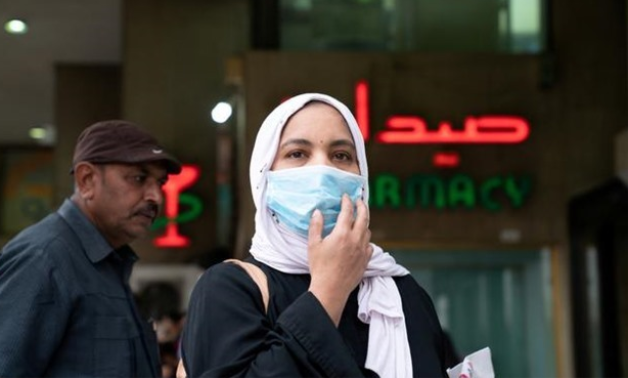
FILE PHOTO: A woman wears a protective face mask, following the outbreak of the new coronavirus, in Kuwait, February 25, 2020. REUTERS/Stephanie McGehee/File Photo
CAIRO – 17 January 2022: Egypt is considered the first Arab state to introduce measures that take into account the needs of women during this pandemic, according to Minister of Planning Hala el-Saeed during the fourth edition of the World Youth Forum that was held last week in Sharm el-Sheikh.
Among the steps taken by the state in this regard to help women was the presidential grant, to support irregular employment of both sexes in various sectors, where 47 percent of women benefited from the grant.
It also included granting an employee who is pregnant or caring for a child under 12 years of age an exceptional paid leave, issuing national ID cards for needy women, facilitating access to reproductive health services for women, and protecting elderly women, and women with disabilities who need care.
This is in addition to working to raise awareness and enhance data and knowledge to include women beneficiaries, educating women about alternative ways to work at home and how to use modern applications for phones, computers and the Internet. Other steps were also introducing the concept of financial inclusion and ways to use digitization, internet banking, and the use of smart wallet.
Under Haya Karima initiative, Egypt also worked to enhance women’s participation in the labor market by establishing 3,000 early childhood nurseries in villages covered by the initiative, and facilitating measures of obtaining loans from the Small and Medium Enterprises Development Authority, with women acquiring the largest share of them at rates of up to 62 percent of the total beneficiaries.
The percentage of female beneficiaries of the vocational training program that ends up with employment is 80 percent, and women represent 78 percent of the total beneficiaries of the Solidarity and Dignity Program, of whom 18 percent are female breadwinners, while the funding for rural women development projects has increased from 5,000 to 10,000 pounds.
Work has also been done to increase the establishment of centers for preparing productive families and training workshops to teach girls how to start projects without risking.
The Egyptian government implemented a number of ambitious programs aimed at reducing illiteracy rates. The percentage of women’s participation in the exhibitions that were organized reached 67 percent of the total participants.
Preparing the first guide for a gender-responsive sustainable development plan during the pandemic, Egypt became the first country in the world to issue a policy paper on the status of women after the Coronavirus outbreak.
Finally, Egypt ranked first in the report issued by the United Nations Women and the United Nations Development Program on the measures taken by countries around the world to support women during the pandemic period, increasing the number of beneficiaries of mobile payment services to about 2 million women, and women received 40 percent of the increase in the number of bank accounts during the last year.
Comments
Leave a Comment